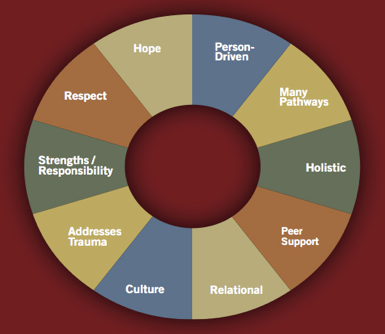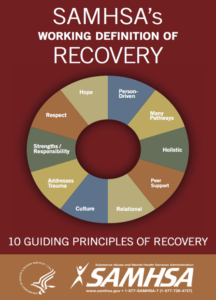In the ever-evolving landscape of addiction treatment, staying abreast of the latest advancements and guidelines is paramount to ensuring the highest quality of treatment. The American Society of Addiction Medicine (ASAM) stands at the forefront of this mission, providing comprehensive framework through its Criteria. This set of guidelines has become the gold standard in addiction medicine, shaping the way professionals approach assessment, treatment planning, and ongoing care.
The 6 Dimensions of Care
The ASAM’s Criteria is a dynamic and adaptable tool designed to assist healthcare professionals in providing personalized, patient-centered care for individuals struggling with addiction. The criteria encompass six dimensions, each crucial in capturing the complexity of addiction and guiding comprehensive treatment plans. In December of 2023, ASAM released its 4th Edition, which included updates to these six dimensions. They are:
- Intoxication, Withdrawal, and Addiction Medications
- Biomedical Conditions
- Psychiatric and Cognitive Conditions
- Substance Use-Related Risks
- Recovery Environment Interactions
- Person-Centered Consideration
These dimensions are used to determine which level of care is appropriate for each client. Recommendations for the level of care and treatment plans are crafted through comprehensive patient assessments, which take into account the patient’s biomedical, psychological, and social requirements.
ASAM’s Growing Popularity
The ascendancy of ASAM compliance in the realm of addiction treatment is not merely a passing trend but a paradigm shift that reflects a broader movement toward evidence-based, patient-centered care. As the prevalence of substance use disorders continues to rise, fueled by myriad social, economic, and environmental factors, the need for standardized, effective approaches to addiction treatment has never been more pressing. Against this backdrop, ASAM compliance offers a roadmap to guide both clinicians and patients towards the promise of recovery for several compelling reasons.
Standardization and Quality Assurance:
ASAM compliance establishes a standardized framework for assessing and treating individuals with substance use disorders. By adhering to these Criteria, treatment providers ensure consistency and quality across all aspects of care delivery, from assessment and diagnosis to treatment planning and discharge. This standardization promotes accountability and quality assurance, instilling confidence in patients, families, and referring professionals regarding the effectiveness and reliability of addiction treatment services.
Alignment with Evidence-Based Practices:
ASAM Criteria reflect the latest advancements in addiction medicine and behavioral healthcare. Compliance with their guidelines ensures that treatment providers are utilizing interventions and approaches that have been rigorously researched and validated for their effectiveness in addressing substance use disorders. This alignment with evidence-based practices enhances treatment outcomes and increases the likelihood of successful recovery.
Improved Communication and Collaboration:
When healthcare providers, treatment facilities, and other stakeholders involved in the continuum of care are following the same criteria, this fosters enhanced communication and collaboration. By utilizing a common language and framework for assessment and treatment planning, providers can more coordinate with one another across different levels and settings. This interdisciplinary collaboration ensures that individuals receive comprehensive, holistic care that addresses their unique needs and promotes long-term recovery.
Regulatory Requirements and Accreditation Standards:
Many regulatory agencies and accrediting bodies require compliance with ASAM Criteria as part of their licensing and accreditation standards for addiction treatment facilities. Meeting these requirements demonstrates a commitment to maintaining high standards of care and adherence to best practices in addiction treatment. Compliance with ASAM guidelines can also help treatment facilities navigate the regulatory landscape more effectively and avoid potential legal and financial risks associated with non-compliance.
Enhanced Patient-Centered Care:
These Criteria prioritize a patient-centered approach to addiction treatment, focusing on the individual’s unique needs, strengths, and preferences. By conducting comprehensive assessments and tailoring treatment plans to meet the specific needs of each patient, treatment providers can deliver more personalized and effective care that resonates with the individual’s goals and values. This patient-centered approach fosters greater engagement, empowerment, and satisfaction among those who seek treatment for substance use disorders.
When a treatment facility embraces the standardized framework of ASAM Criteria, they are offered a multitude of benefits. Their outcomes are improved, treatment plans are enhanced, the allocation of resources is optimized, and the decision-making of their patients becomes empowered. This is not merely a set of rules and regulations, but a path that holds transformative potential for the lives of individuals and communities affected by addiction. It represents a convergence of best practices, regulatory standards, and patient-centered principles that pave the way towards interdisciplinary cooperation and mutual support. By aligning with ASAM’s guidelines, treatment providers can enhance the quality, effectiveness, and accessibility of addiction treatment services, ultimately improving outcomes and promoting recovery for their clients.
If you and your organization are looking to come into alignment with ASAM’s Criteria, we can help! Accreditation Guru offers assistance by providing crosswalks of your policies and procedures to ASAM, reviewing clinical records for accurate documentation of ASAM Criteria clinical processes, and more. Click here to schedule a free Zoom consultation with us so we can further discuss your unique needs.




